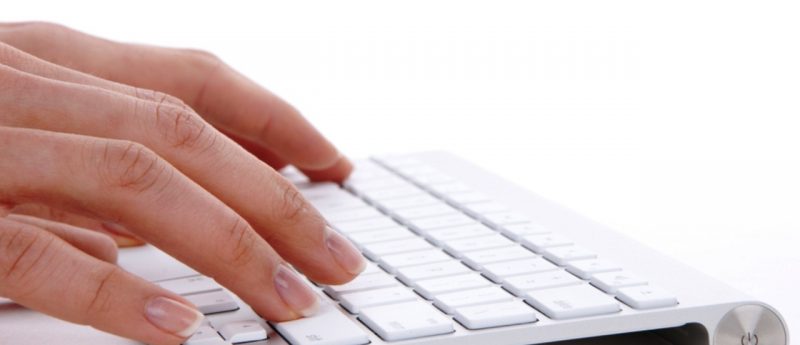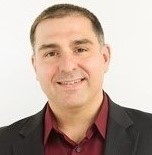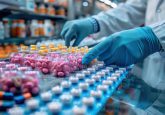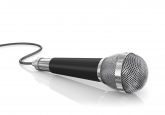Ask the Experts on Microsampling ¦Stuart Kushon (Neoteryx)

 Stuart Kushon is currently the Research & Development Manager at Neoteryx (CA, USA), a microsampling focused company. In his current role, he leads the development effort for simple, quantitative and automatable microsampling solutions. Prior to joining Neoteryx, Dr Kushon was the Senior Scientist responsible for sample preparation product development at Phenomenex (CA, USA), where he built a vast wealth of microsampling expertise as the principal investigator and project lead for the Mitra Microsampling Device along with a series of sample preparation and HPLC product offerings. Prior to that he served as the Manager of Chemistry Research & Development at a startup where he directed the development of products (both instruments and assays) using a novel fluorescence detection platform and a rapid immunoassay platform for medical, biodefense and high throughput drug discovery applications. He acquired his PhD in chemistry from Carnegie Mellon University (PA, USA), where he studied the thermodynamics and kinetics of binding of small molecules, oligonucleotides and their analogs.
Stuart Kushon is currently the Research & Development Manager at Neoteryx (CA, USA), a microsampling focused company. In his current role, he leads the development effort for simple, quantitative and automatable microsampling solutions. Prior to joining Neoteryx, Dr Kushon was the Senior Scientist responsible for sample preparation product development at Phenomenex (CA, USA), where he built a vast wealth of microsampling expertise as the principal investigator and project lead for the Mitra Microsampling Device along with a series of sample preparation and HPLC product offerings. Prior to that he served as the Manager of Chemistry Research & Development at a startup where he directed the development of products (both instruments and assays) using a novel fluorescence detection platform and a rapid immunoassay platform for medical, biodefense and high throughput drug discovery applications. He acquired his PhD in chemistry from Carnegie Mellon University (PA, USA), where he studied the thermodynamics and kinetics of binding of small molecules, oligonucleotides and their analogs.
In this ‘Ask the Expert’ feature we will be discussing recent developments in microsampling with some of the leading experts in the field. We will discuss the various microsampling techniques including advantages and challenges faced by bioanalysts when applying these methods.
In the fourth instalment of this feature, Stuart Kushon, Neoteryx, discusses with us some of the advances in microsampling techniques in recent years, including some of the main hurdles faced by experts.
Microsampling techniques (DBS, capillary and liquid microsampling) have gained growing interest over the last couple of years – do you think these advances will continue to draw in interest?
Absolutely: there is no question that microsampling will continue to draw even more interest in the coming years. Advances in detector technology make the amounts of blood that are currently being drawn completely excessive. Looking at the program abstracts of the American Society for Mass Spectrometry Annual Conference, it looks like interest on the topic of MS analysis of DBS cards started around 2007. The activity increased to 32 abstracts by 2010, and then declined to only 14 abstracts in 2014. That trend has now reversed: I found 28 abstracts this year (4–5 June 2016, TX, USA). So, the interest in microsampling has definitely been on the rise these past few years! I think the main question that keeps coming up is: ‘Why should we take more blood than we need?’.
One of the earlier concerns for many practitioners and regulators regarded validation of microsampling techniques and trusting data. To what extent do you think this has this been overcome?
I think the main issue for some is fear of regulators, but it should be understood that many labs claim to be performing Laboratory Developed Tests using DBS cards in a CLIA regulated environment. This means that the quality of data from the tests meets the regulatory requirements. There’s news in the industry that a Pharmaceutical program intends to use DBS cards for an upcoming clinical trial!
Some companies have decided that non-capillary microsampling was not the best approach for sampling and instead adopted capillary microsampling. Do you agree with this conclusion?
Capillary glass microsampling has many advantages, including that the precise volumes that are collected can be in the 1% RSD range. Furthermore, there are workflows that allow for the generation of plasma from these capillaries. For organizations that require plasma for analysis, plasma capillary microsampling seems to be the best choice at this time. The disadvantages are that collection of a sample with a capillary can be a difficult manual step and downstream processing is quite difficult to automate. A DBS card, in my opinion, provides a more straightforward sampling approach, and there are commercially available instruments that allow for automation. Other microsampling approaches like the Mitra® microsampler have aimed at further improvements to the collection experience and allow for very customizable automation strategies. These devices are all part of a tool box and they all meet different organizational needs.
What have been the most exciting developments in microsampling techniques in recent years?
I’m probably biased, but I truly believe that the advent of Volumetric Absorptive Microsampling (VAMS™) technology is an extraordinary development in the field of microsampling. VAMS technology, available in the Mitra® Microsampling Device, delivers on all the benefits of dried blood microsampling including reduction in blood volumes required allowing for minimally invasive techniques, a simplified workflow compared to traditional wet samples and the elimination of costly cold chain / biohazard shipping. However, it offers several advantages over DBS cards for both the lab and the patient. Two significant advantages for the lab are the fact that VAMS technology effectively eliminates the hematocrit effect and that the Mitra device is amenable to typical liquid handling instrumentation. The patient benefits from very simple self-collections that can be done at home or in a remote location, delivering a more convenient and comfortable experience.
What do you think remains the greatest challenge to microsampling?
I think the greatest challenge to microsampling is the same as any novel approach… the appeal to tradition: ‘We do it this way, it’s always been done this way’. There is an enormous barrier that is created by the sunk cost of existing approaches. The equipment and the know how would need to change – most organizations are not comfortable with change and very few want to lead the way because of the associated costs. However, I don’t think this is a totally unresolvable issue. The advantages of microsampling both to the patient, and the bioanalytical lab, will ultimately outweigh the switching costs. In a clinical setting the improvement to the patient experience is substantial. There are shipping and animal welfare advantages and the potential for automation allows for dramatic reduction in analytical costs.
Do you believe microsampling techniques, particularly DBS and capillary microsampling, will ever be universally accepted in the bioanalytical community or do you see them becoming reserved for more niche applications?
Universal acceptance is a pretty broad statement. I think it is already clear that microsampling can be used to great effect by some labs, and that it is an extremely useful approach to sample collection. That said, every technology has a place where it is most useful, and I believe that microsampling is no exception. I think that applications where routine sampling is performed will be where microsampling sees the most use. Therapeutic drug monitoring and personalized medicine seem to be obvious applications for microsampling due to the benefits of routine sampling. Microsampling will likely be favored in situations where a patient could be weakened unnecessarily by a blood draw (particularly in neonates and the elderly).
How do you see microsampling techniques evolving over the next 5–10 years? What challenges do you think will remain or appear?
Manipulation of microsamples remains a significant challenge for many labs. High throughput automated analysis of microsampling devices seems to be within reach. There is a significant trend towards automation, and microsampling workflows will be strongly affected by it. Completely automated workflows, from sample receipt to answer, are conceivable at this point and I think within 5–10 years they will be a reality.
Read previous instalments of Ask the Experts on Microsampling featuring Tim Sangster (Charles River), Craig Audler (Supelco/Sigma-Aldrich) and Christopher James (AMGen, Inc.) here.






